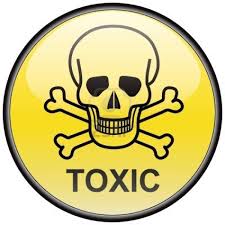
I’ve mentioned before about the lack of regulation and standards in the personal care products industry, but I think it’s really important to keep talking about it. Unfortunately, too many families trust products as safe just because they’re on store shelves and say they are “non-toxic”.
Did you know that non-toxic means that only 49% or fewer of lab animals DIED when exposed to the chemical or product? I’m guessing you would agree with me that you don’t want a product with 49% lethal power in mice to be on your family’s skin or teeth.
There are countless products available in the marketplace and reading labels is an absolute must.
Here are a few tips to use when considering a product’s safety from the EWG:
- Start at the end, with preservatives. Avoid:
- Words ending in “paraben”
- DMDM hydantoin
- Imidazolidinyl urea
- Methylchloroisothiazolinone
- Methylisothiazolinone
- Triclosan
- Triclocarban
- Triethanolamine (or “TEA”)
- Check the beginning of the ingredients lists, where soaps, surfactants, and lubricants show up. Try to avoid ingredients that start with “PEG” or have an “-eth” in the middle (e.g., sodium laureth sulfate).
- Read the ingredients in the middle. Look for these words: “FRAGRANCE,” “FD&C,” or “D&C.”
Another consideration is the exposure of our children to toxic ingredients. Pound for pound kids are exposed to MORE toxins than adults these days. This is greatly concerning to me as a physician as I am convinced that exposure to toxins is wreaking havoc on bodies everywhere causing all kinds of hormonal disruption. I see women and men in their 20s and 30s all day long who are suffering from an imbalance in sex hormones and I blame our toxic environment (including food and personal care products) among the top contributing factors.

It’s even MORE important to make sure we’re reading labels for the products we’re exposing our children to. Additionally limit exposure to children. They don’t need to be shampooed every single day nor do they need lotion- organic coconut oil works just fine.
Start here:
- Always avoid EWG’s top six chemicals of concern for kids:
- 2-Bromo-2-Nitropropane-1,3 Diol
- BHA
- Boric acid and sodium borate
- DMDM Hydantoin
- Oxybenzone
- Triclosan
Alarmed? Overwhelmed? It’s a big challenge.
In our family we have found that one of the best solutions to the confusion is to simply make our own products when it’s convenient to do so. We’re not big on lengthy and involved recipes, but we’ve got a few tried and trues that we turn to regularly including sunscreen, acne cream and diaper cream. We’re also working on some complete solutions (ready in the bottle) to eliminate the guess work for your family. We can’t wait to share them with you soon!

